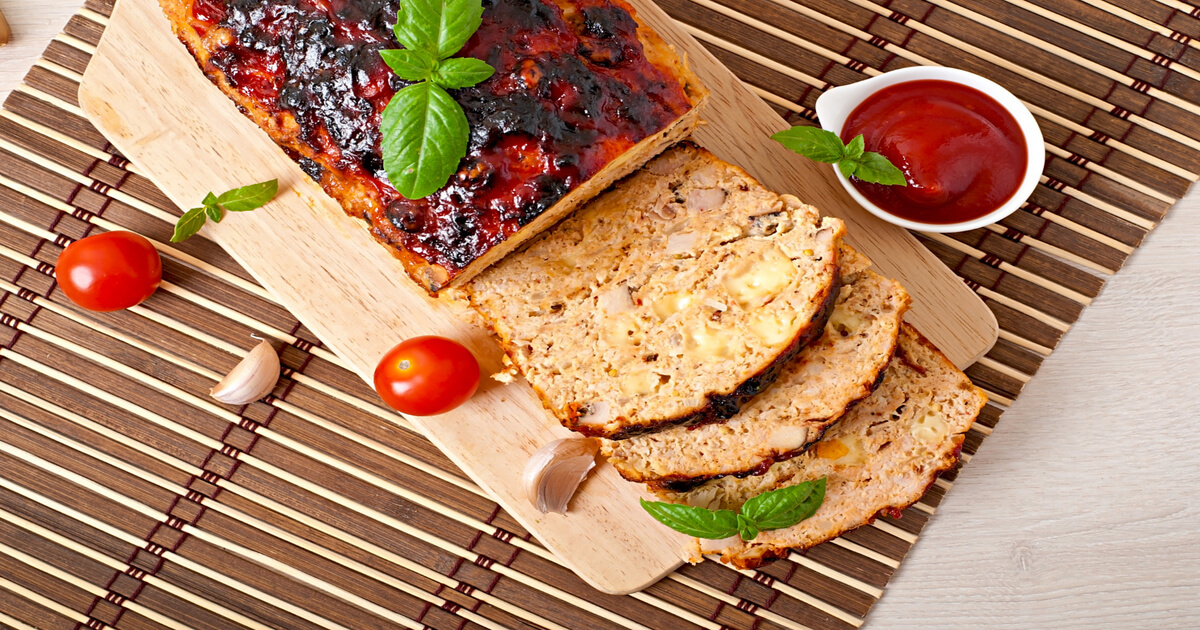Introduction
Meatloaf is more than just a meal—it’s a comforting classic that brings families together. Known for its tender texture and savory flavor, this dish has been a staple in households for decades. Whether paired with mashed potatoes or served on its own, meatloaf always hits the spot.
One key to a great meatloaf is the balance of flavors, and onions play a critical role. They provide sweetness and depth that elevate the dish. However, a debate exists in kitchens everywhere: Should you cook onions before adding them to meatloaf? This decision can impact the flavor, texture, and preparation time of your recipe.
For those who love shortcuts without sacrificing taste, Lipton onion soup mix is a game-changer. This ingredient simplifies the process while adding a rich, savory flavor that many associate with the best homemade meatloaves.
In this article, we’ll explore the importance of onions in meatloaf, tackle the cooking question, and share step-by-step recipes. Plus, we’ll uncover secrets for juicy, flavorful meatloaf and provide tips on incorporating Lipton onion soup mix for effortless preparation. Let’s get started!
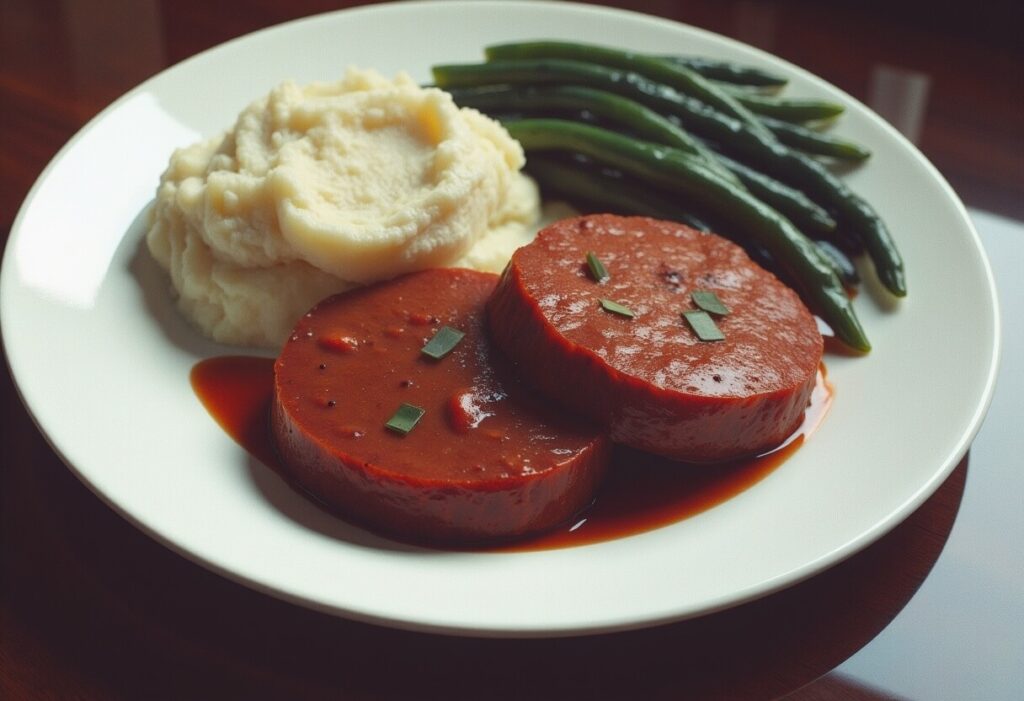
The Role of Onions in Meatloaf
1.1 Why Onions Matter in Meatloaf
Onions are one of the most essential ingredients in meatloaf. They provide a natural sweetness and a mild tang that balance the richness of ground meat. Their crisp texture transforms into a tender bite during cooking, adding complexity to each mouthful. When paired with the right seasonings, onions elevate the dish from a basic meal to a crowd-pleasing favorite.
For home cooks looking for convenience without compromising flavor, Lipton onion soup mix is a perfect choice. This pre-mixed blend combines onions with herbs and seasonings, simplifying the process of seasoning your meatloaf. Instead of chopping and sautéing, you can achieve the same depth of flavor with one packet. It’s no surprise that recipes like the Old fashioned meatloaf recipe Lipton onion soup remain beloved staples for many families. This mix delivers consistent, delicious results with minimal effort, perfect for busy weeknights or beginner cooks.
1.2 Should You Cook Onions Before Adding to Meatloaf?
This is one of the most debated questions among meatloaf enthusiasts. The answer largely depends on personal preference and the type of texture you want to achieve.
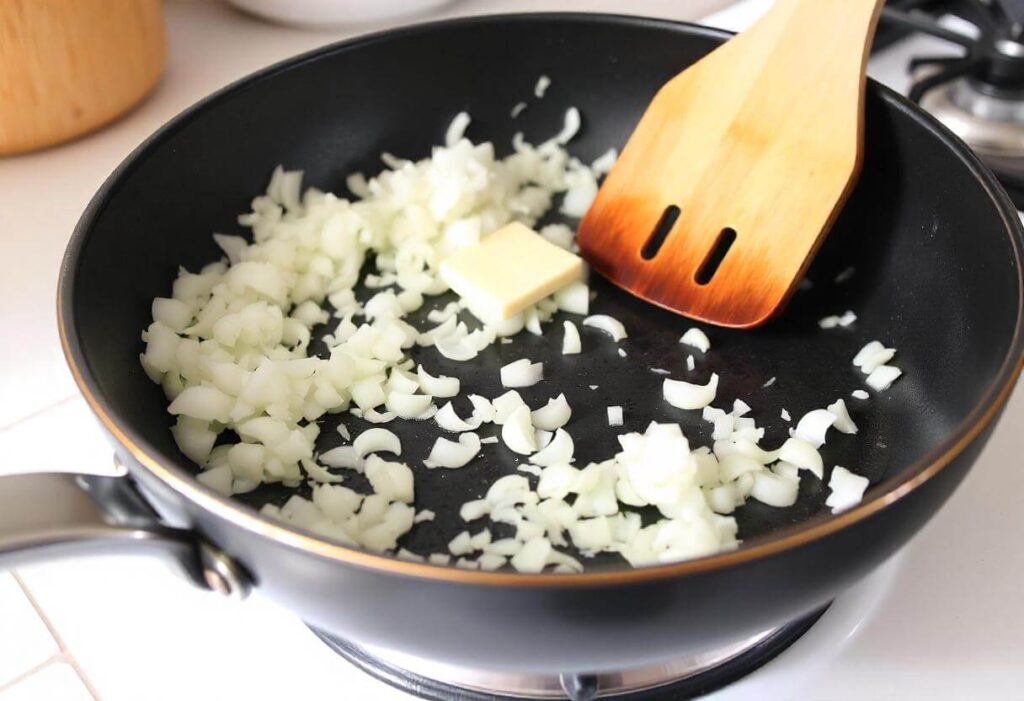
Pros of Cooking Onions:
- Cooking onions softens their texture, preventing large crunchy bits in the meatloaf.
- Heat brings out the natural sweetness of onions, enhancing their flavor.
- Pre-cooked onions blend more seamlessly with other ingredients, creating a uniform consistency.
Cons of Cooking Onions:
- It adds an extra step, making preparation longer.
- Cooking can reduce the moisture onions naturally contribute to the meatloaf.
For those using fresh onions, lightly sautéing them in butter or oil can make a noticeable difference in taste and texture. However, when using Lipton onion soup mix, this step is unnecessary, as the onions are already dehydrated and seasoned for convenience.
Ultimately, whether to cook onions depends on your recipe and the result you’re aiming for. Many recipes, like the Easy meatloaf recipe Lipton onion soup, skip this step entirely to save time while still delivering amazing flavor. If you’re short on time or prefer simplicity, uncooked onions (or the soup mix) work just as well.
How to Make Juicy Meatloaf Every Time
2.1 The Basic Meatloaf Formula
When making meatloaf, the basic formula ensures consistent results every time. A traditional meatloaf recipe includes three main components: meat, binders, and flavoring. Balancing these elements is crucial for achieving a moist and flavorful loaf.
The Meat:
The foundation of any great meatloaf is ground meat. A common choice is an 80/20 blend of ground beef, which has the perfect ratio of meat to fat for a juicy texture. For more complexity, you can mix ground pork, veal, or turkey with beef.
The Binder:
Binders hold the meat together and create a soft texture. Classic options include breadcrumbs, oats, or crushed crackers. Eggs are also essential, as they help emulsify the fat and moisture. Typically, one egg per pound of meat is sufficient.
The Flavoring:
This is where creativity shines. Salt, pepper, herbs, garlic, and onions build the foundation, while sauces like ketchup or Worcestershire add depth. The original Lipton onion soup meatloaf recipe simplifies this process by combining dried onions, savory seasonings, and a hint of sweetness in one packet. Just mix the soup mix with the meat and binder, and you’re ready to go.
Variations:
For those looking to experiment, try adding shredded cheese, finely chopped vegetables, or even bacon for an extra punch of flavor. Recipes like the Easy meatloaf recipe Lipton onion soup adapt this classic formula into simple, quick dinners without sacrificing quality.
2.2 Secret Tips for Juicy Meatloaf
One of the most common concerns is how to make meatloaf juicy. Let’s uncover the secrets that ensure your meatloaf is never dry or crumbly.
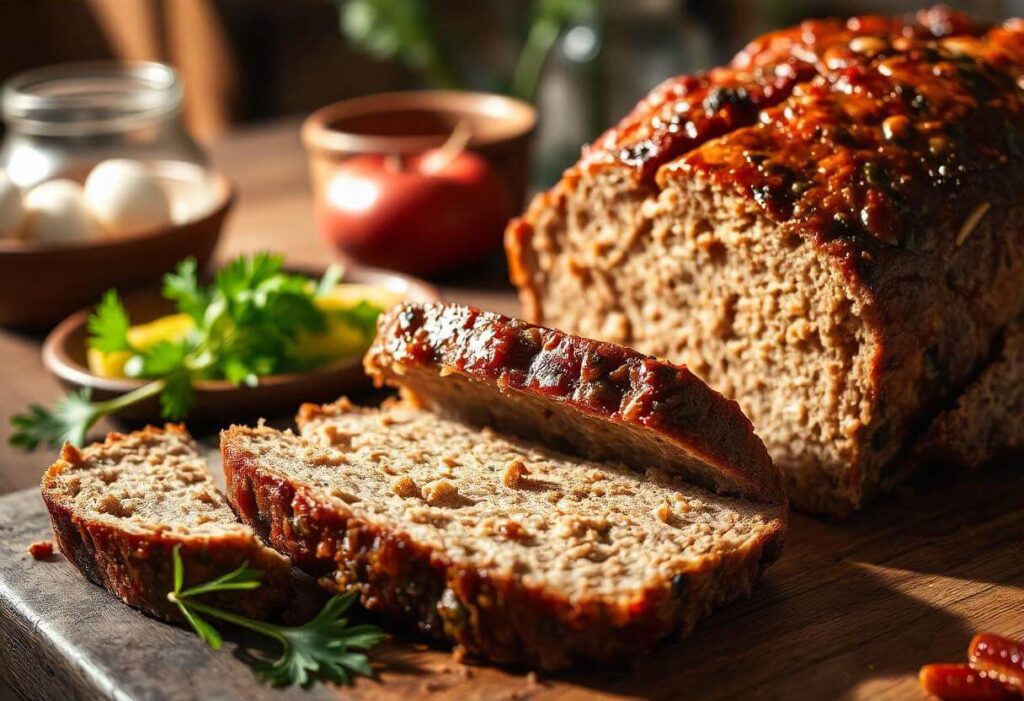
What is the Secret to Juicy Meatloaf?
- Fat Content Matters: A higher fat content in your meat blend ensures the loaf stays moist. While leaner options like turkey are healthier, combining them with fattier meats like pork can prevent dryness.
- Binder Ratios: Using the right amount of breadcrumbs and eggs locks in moisture. Avoid overloading the mix, as this can result in a dense loaf.
- Add Liquid: Incorporating a small amount of liquid is key. While water works in a pinch, milk is the gold standard.
Why Milk Instead of Water in Meatloaf?
Milk softens breadcrumbs, creating a tender, cohesive texture. Unlike water, milk also enriches the flavor, adding a subtle creaminess that complements the meat. Skipping milk can result in a dryer, less flavorful loaf.
Flavor Boosters:
Adding ingredients like Worcestershire sauce or ketchup enhances the savory notes in your meatloaf. Worcestershire provides umami depth, while ketchup delivers a hint of tangy sweetness. For a flavor-packed option, try the Meatloaf recipe with onion soup mix and Worcestershire—a winning combination that ensures robust taste with minimal effort.
Cooking Techniques:
To lock in moisture:
- Use a loaf pan with ventilation or shape the meatloaf on a baking sheet for better air circulation.
- Avoid overcooking; a meat thermometer ensures it reaches the perfect internal temperature of 160°F.
- Rest the meatloaf for 10 minutes before slicing, so the juices redistribute evenly.
By following these tips, you’ll master the art of making a perfectly juicy meatloaf every time. Whether it’s a traditional loaf or a modern variation, your family will keep coming back for more!
Exploring Lipton Onion Soup Mix Recipes
3.1 The Classic Lipton Meatloaf Recipe
Lipton onion soup mix has earned its place as a pantry staple for home cooks everywhere. The original Lipton meatloaf recipe is one of the most beloved versions of this comfort food, combining simplicity with unbeatable flavor. It’s no wonder why many refer to it as the Lipton meatloaf recipe best for timeless meals.
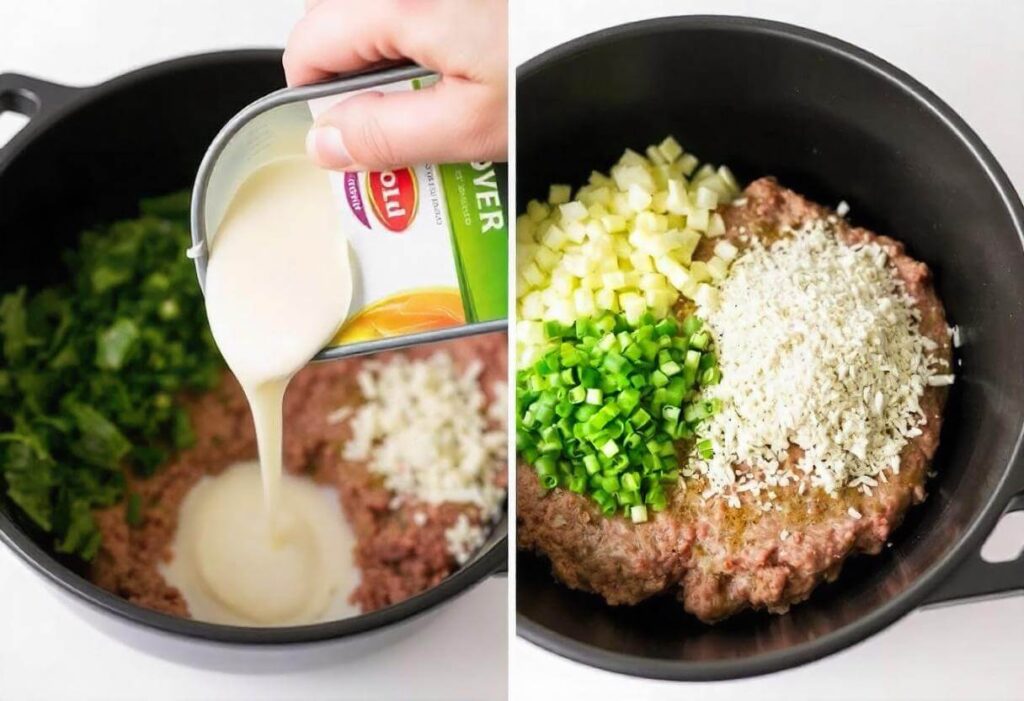
Ingredients:
- 2 pounds of ground beef
- 1 envelope Lipton onion soup mix
- 3/4 cup breadcrumbs
- 2 eggs
- 1/3 cup ketchup (plus extra for topping)
- 1/2 cup water or milk
Step-by-Step Instructions:
- Preheat the Oven: Set your oven to 375°F (190°C).
- Prepare the Mixture: In a large mixing bowl, combine the ground beef, Lipton onion soup mix, breadcrumbs, eggs, and water or milk. Mix until just combined.
- Shape the Loaf: Transfer the mixture to a baking sheet or loaf pan. Shape it into a loaf, ensuring it’s evenly compacted.
- Add Topping: Spread a thin layer of ketchup over the top for a tangy glaze.
- Bake: Place the meatloaf in the oven and bake for 50–60 minutes, or until the internal temperature reaches 160°F.
- Rest and Serve: Let the meatloaf rest for 10 minutes before slicing to allow the juices to settle.
This recipe is a go-to for its simplicity and consistency. The Lipton onion soup mix eliminates the need for measuring multiple seasonings, delivering a perfectly balanced flavor every time.
3.2 Variations for Modern Cooks
While the classic recipe is a favorite, there’s always room to experiment and make meatloaf your own. Modern versions incorporate creative ingredients, transforming the dish into something new and exciting.
Add Cheese:
For a gooey, indulgent twist, add shredded cheddar or mozzarella to the mixture or stuff the meatloaf with a cheese center. This adds a creamy element that pairs well with the savory flavors of the onion soup mix.
Include Vegetables:
Boost the nutrition and flavor of your meatloaf by incorporating finely chopped vegetables. Carrots, bell peppers, or zucchini are great options. These add moisture and texture without overpowering the dish.
Unique Seasonings:
For a more complex flavor profile, experiment with spices like smoked paprika, garlic powder, or Italian seasoning. Alternatively, try adding a splash of Worcestershire sauce to amplify the umami notes—a tip commonly used in the Meatloaf recipe with onion soup mix and Worcestershire.
Easy Weeknight Spin-Off:
Looking for a quick and easy dinner? Try the Easy meatloaf recipe Lipton onion soup. Replace breadcrumbs with quick-cooking oats and bake the loaf in muffin tins for individual portions. These mini meatloaves cook faster and are perfect for meal prep or a weeknight meal.
Pro Tip: Freeze leftover portions for a quick heat-and-serve option on busy days. The flavors intensify over time, making reheated meatloaf even more delicious.
By combining the convenience of Lipton onion soup mix with modern twists, you can create a variety of meatloaf recipes that suit every occasion. Whether you stick to the classic or venture into new territory, Lipton onion soup mix ensures flavorful results every time.
FAQ Section
4.1 What is the Secret to Juicy Meatloaf?
The key to a juicy meatloaf lies in the right combination of ingredients and cooking techniques. As discussed earlier, using a mix of ground beef with sufficient fat (like an 80/20 blend) ensures that the meat retains moisture during cooking.
Adding binders like breadcrumbs or oats, softened with milk, helps lock in the juices while preventing the loaf from falling apart. Don’t forget to include eggs, which act as emulsifiers, blending the fat and liquid for a cohesive texture.
Cooking methods also play a vital role. Pan searing the meatloaf before baking creates a flavorful crust while sealing in juices. Alternatively, slow baking at a lower temperature (around 325°F) evenly cooks the meat without drying it out. Lastly, always let your meatloaf rest for 10 minutes after cooking. This allows the juices to redistribute, so every bite is tender and moist.
4.2 What is the Basic Meatloaf Formula?
At its core, a meatloaf follows a simple formula:
- Meat: 2 pounds of ground meat (beef, pork, turkey, or a combination).
- Binder: 3/4 to 1 cup of breadcrumbs, oatmeal, or crushed crackers.
- Liquid: 1/3 to 1/2 cup of milk or water.
- Eggs: 1 to 2 eggs per pound of meat.
- Flavoring: Seasonings, herbs, and vegetables like onions or garlic.
This formula allows endless variations, so you can customize your meatloaf to your taste. For example, crushed crackers can replace breadcrumbs for a richer flavor, while oats offer a heartier, more rustic texture. Using Lipton onion soup mix simplifies the seasoning step, adding bold flavors without extra effort.
4.3 Why Milk Instead of Water in Meatloaf?
Milk is a secret weapon in making tender and flavorful meatloaf. Unlike water, which only adds moisture, milk also softens breadcrumbs, creating a creamy texture. The natural fats in milk enrich the overall flavor, making each bite more satisfying.
For those who are lactose-intolerant or prefer alternatives, unsweetened almond milk or chicken broth can be used as substitutes. However, the richness of traditional milk remains unmatched in enhancing the meatloaf’s tenderness and taste.
By keeping these tips and answers in mind, you’ll be well on your way to mastering the art of meatloaf—whether you’re following a classic recipe or creating a modern twist!
Conclusion
Onions play a pivotal role in creating the perfect meatloaf, contributing both flavor and texture. Whether you choose to cook them beforehand or add them raw depends on your desired result. For a simplified and flavorful option, Lipton onion soup mix eliminates the guesswork, delivering consistent and delicious results every time.
Throughout this article, we’ve explored the basics of crafting a juicy, tender meatloaf, from balancing ingredients to enhancing flavor with milk and Worcestershire sauce. The original Lipton meatloaf recipe is a timeless favorite, while modern variations allow you to customize your dish with cheese, vegetables, or unique seasonings.
Now it’s your turn to get creative. Experiment with the recipes and tips shared here to make meatloaf that fits your taste and lifestyle. Whether you stick to tradition or venture into new territory, a flavorful, comforting meal awaits. Enjoy bringing this classic dish to life in your kitchen!

